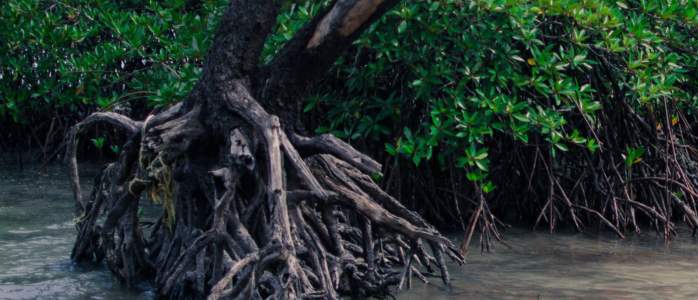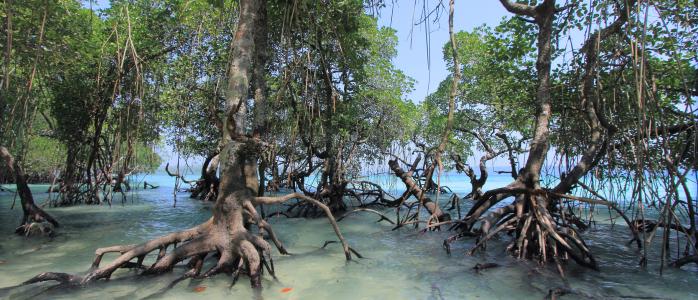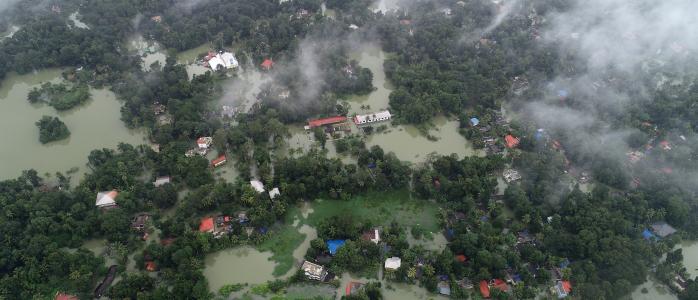



The world finally has a High Seas Treaty. Adopted by the Intergovernmental Conference on Marine Biodiversity of Areas Beyond National Jurisdiction (BBNJ), this first-of-its-kind treaty will serve as the legal basis for the conservation and sustainable use of marine biodiversity in areas beyond national jurisdiction. It offers a remarkable opportunity to protect 30 per cent of the world's oceans and lands by 2030. The High Seas Treaty takes a significant leap over the UN Convention on the Law of the Sea by serving as the first legal framework to address the triple threats of climate change, biodiversity loss, and pollution. Moreover, surpassing the threshold of 1.5°C warming will result in the collapse of 70 to 90 per cent of coral reefs globally. The High Seas Treaty aims to reverse this trend by establishing robust conservation measures. As one of the world's most populous and rapidly developing countries, India has a significant stake in protecting the environment for future generations. We should leverage this opportunity to lead global efforts and capitalise on the potential of nature based solutions (NbS) by becoming a signatory to the High Seas Treaty.
The High Seas Treaty offers an opportunity to combat climate change, as healthy marine ecosystems act as carbon sinks, absorbing significant amounts of carbon dioxide from the atmosphere. The marine ecosystem also supports the dietary requirements of more than 3 billion people and provides livelihoods to an estimated 60 million people through the fisheries and aquaculture sector. This ambitious goal is essential for conserving biodiversity, safeguarding critical habitats, and protecting livelihoods. The Treaty also addresses critical gaps in existing international frameworks and provides a platform for nations to collaborate, share resources, and develop strategies to combat the pressing challenges faced by our oceans.
The USP of the High Seas Treaty is that it focuses on four key interventions, one of them being the establishment of area-based management tools that includes marine protected areas. Such tools are a part of NbS and are a key step towards achieving the ‘30 by 30’ target identified in the Kunming Montreal Global Biodiversity Framework. Even though several countries across South and Southeast Asia have explored coastal area-based NbS, including coral reef management and mangrove conservation, the scope of ocean-based NbS remains underexplored. By ratifying the treaty, India can unlock numerous benefits.
First, India stands to gain economically. India's blue economy contributes an estimated 4 per cent to its Gross Domestic Product (GDP) and supports 95 per cent of the country's businesses through transportation. The conservation and sustainable use of marine resources can generate revenue through eco-tourism, fisheries, and the development of blue economy sectors. Marine tourism is also a sector that has been one of the fastest growing globally and in India. Particularly in coastal states like Kerala, the total number of jobs created directly and indirectly by the sector between 2009 and 2012 turned out to be around 23 per cent of the total employment. Furthermore, The Government of India launched the Pradhan Mantri Matsya Sampada Yojana (PMMSY), in May 2020, with an investment of INR 20,050 crore (USD 2.5 billion) to bring about a Blue Revolution through sustainable and responsible development of the country's fisheries sector. Thus, investing in the conservation and sustainable development of India's blue economy holds the potential to create numerous employment opportunities and drive the country's economic growth.
Second, ratifying the High Seas Treaty aligns with India's commitments under the Sustainable Development Goals (SDGs), specifically SDG 13 (Climate Action) and SDG 14 (Life Below Water). It also reinforces India's National Determined Contributions (NDCs), the recently launched Mission LiFE and its actions within the G20 framework. The value of the ‘natural capital’ of the Blue Economy is estimated to be around USD 25 trillion, with the annual value of produced goods and services estimated to be USD 2.5 trillion annually, and countries such as China, India, Korea, and Japan are the major players from Asia. By becoming a voice of the Global South, India can ensure that the concerns and perspectives of developing nations are adequately represented in international discussions and decision-making processes. India can also serve as a role model for other nations by proving that Blue Economy is not just an altruistic intent, but a development imperative from the perspective of the Global South.
Finally, the High Seas Treaty, coupled with the adoption of NbS such as seascape restoration, presents a unique opportunity to protect our oceans and combat the interconnected challenges of climate change, biodiversity loss, and pollution. India, as a responsible global player, should seize this opportunity by becoming a signatory to the treaty. By doing so, India can lead global efforts, and safeguard its own economy and biodiversity. Let us harness the power of nature and work collectively to secure a brighter future for our aquatic ecosystems and the generations to come.
Shreya Wadhawan is a Programme Associate and Aryan Bajpai is a Consultant at the Council on Energy, Environment and Water. Send your comments to [email protected].






Add new comment